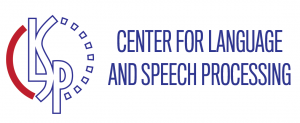Looking Behind Verb Classes – Beth Levin (Stanford)
Abstract
Fillmore’s study “The Grammar of Hitting and Breaking” demonstrated the importance of semantically coherent verb classes as descriptive devices for understanding the organization of the verb lexicon and for capturing patterns of shared verb behavior. Much subsequent work has confirmed and extended the findings of this study. For example, in my 1993 book “English Verb Classes and Alternations”, verbs are essentially classified in two ways: according to their semantic content (e.g., verbs of manner of motion, verbs of sound emission) and according to their participation in particular argument alternations (e.g., dative alternation, causative alternation). The first approach yields a fairly fine-grained semantic classification, while the second yields a coarser-grained classification, which appears to have more grammatical relevance than the first. This and other work suggests that verb classes should not be taken as primitive, as they have sometimes been. This position is reinforced by the considerable number of verbs which show complex patterns of behavior that have been handled by positing multiple semantic class membership. Previous studies of verb classes, then, raise important questions: What are the most useful dimensions for classifying verbs? What is the appropriate grain size for the description of verb classes? What determines whether a given verb shows multiple class membership? In this talk I ask what is behind verb classes that makes them so appealing as a research tool, yet explains their limitations. I show that many phenomena falling under the label “verb class” can be understood in the context of three levels of linguistic description and the relations between them: (i) the meaning lexicalized by the verb itself (its “root”), (ii) the set of event schemas, and (iii) the morphosyntactic devices that languages make available for the realization of arguments (e.g., grammatical relations, case markers, serial verb constructions). Each provides a way of grouping verbs into classes that can be helpful for certain facets of both language-specific and crosslinguistic studies.
Biography
Beth Levin is the William H. Bonsall Professor in the Humanities at Stanford University. After receiving her Ph.D. from MIT, she had major responsibility for the MIT Lexicon Project and taught at Northwestern University. Her work investigates the semantic representation of events and the morphosyntactic devices English and other languages use to express events and their participants. Her publications include English Verb Classes and Alternations: A Preliminary Investigation (1993) and with Malka Rappaport Hovav, Argument Realization (2005) and Unaccusativity: At the Syntax-Lexical Semantics Interface (1995)


